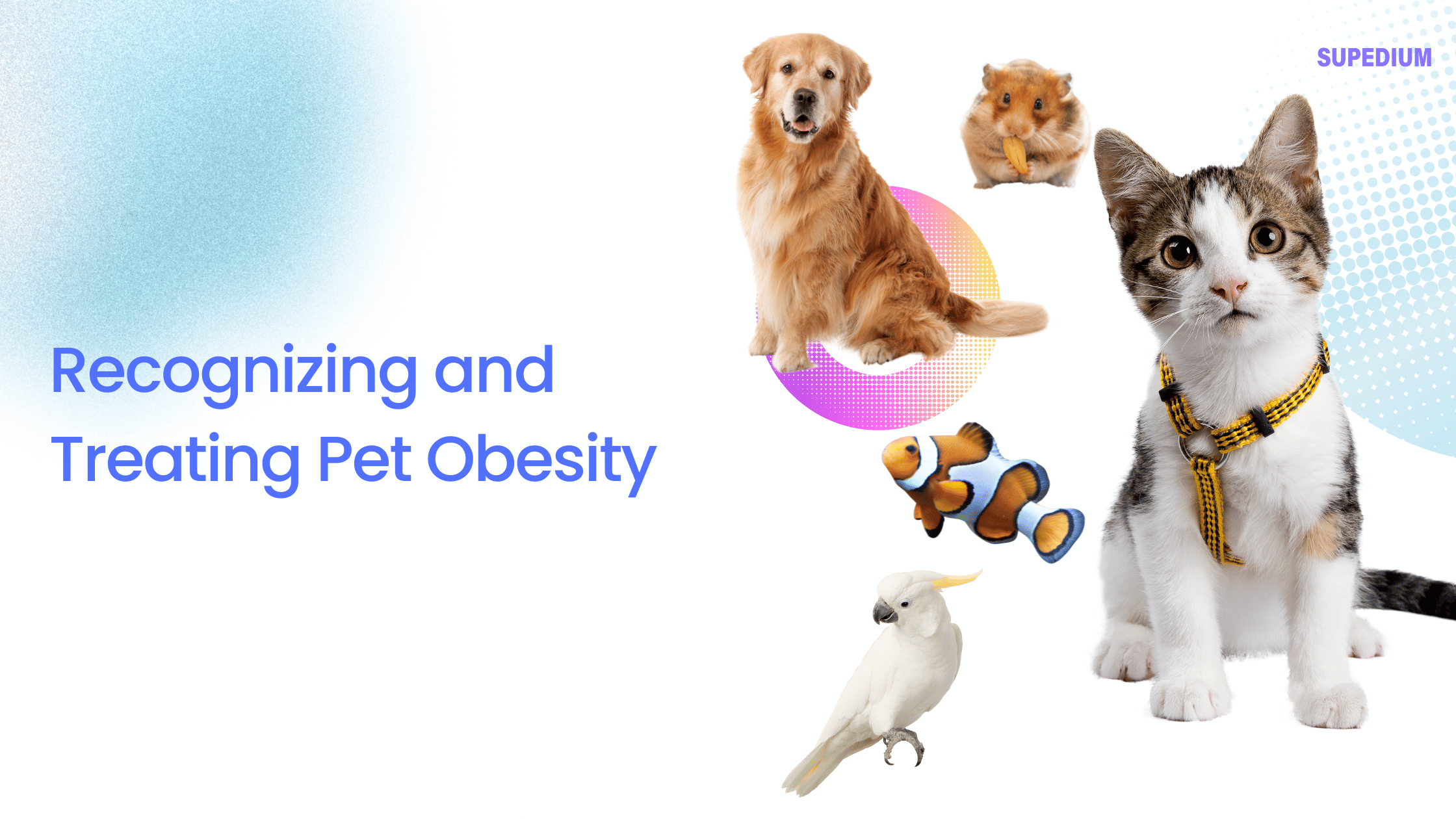Table of Contents
![]()
Introduction
Pet obesity is a growing concern that affects the health and well-being of millions of pets worldwide. Defined as an excess accumulation of body fat, pet obesity can lead to various health issues and significantly reduce a pet’s quality of life. This article aims to explore the recognition and treatment of pet obesity, highlighting the importance of awareness and proactive measures for pet owners.
Understanding Pet Obesity
Statistics and Prevalence
Pet obesity is increasingly prevalent in both cats and dogs, with studies indicating that nearly 60% of dogs and 55% of cats are classified as overweight or obese in some regions. This alarming trend spans various demographics, affecting pets of all breeds, ages, and lifestyles.
Causes of Pet Obesity
The causes of pet obesity are multifaceted, including:
- Overfeeding and Improper Diet: Many pet owners unknowingly overfeed their pets or provide diets high in calories and low in nutritional value.
- Lack of Physical Activity: Busy lifestyles often lead to insufficient exercise, making pets more prone to weight gain.
- Genetic Predisposition: Some breeds are more susceptible to obesity due to genetic factors.
- Health Conditions: Conditions such as hypothyroidism or Cushing’s disease can contribute to weight gain.
- Environmental Factors: Owner habits and lifestyle choices can also play a significant role.
Recognizing Obesity in Pets
Physical Signs of Obesity
Recognizing obesity in pets involves evaluating their physical appearance and behavior:
- Body Condition Scoring (BCS): A standardized method to assess a pet’s weight relative to its ideal body condition. A score of 1-9 indicates the degree of obesity.
- Weight Compared to Breed Standards: Knowing the average weight range for your pet’s breed can help in identifying obesity.
- Difficulty in Performing Normal Activities: Signs such as excessive panting, reluctance to play, or difficulty climbing stairs may indicate excess weight.
Behavioral Indicators
In addition to physical signs, certain behaviors may suggest obesity:
- Lethargy: An overweight pet may show a decrease in energy levels and activity.
- Reluctance to Exercise: If your pet avoids playtime or long walks, it may be struggling with excess weight.
- Changes in Eating Habits: Overeating or scavenging for food can signal underlying issues.
When to Consult a Veterinarian
Regular veterinary check-ups are crucial for maintaining your pet’s health. If you notice significant weight changes or other concerning signs, it’s essential to consult a veterinarian for a professional assessment and tailored advice.
Health Risks Associated with Pet Obesity
Short-term Health Risks
Obesity can lead to several immediate health complications, including:
- Difficulty in Anesthesia and Surgery: Overweight pets face increased risks during surgical procedures.
- Skin Issues: Excess weight can cause skin folds that trap moisture and bacteria, leading to infections.
Long-term Health Risks
The long-term consequences of pet obesity can be severe:
- Diabetes Mellitus: Obesity is a significant risk factor for diabetes, leading to a range of health complications.
- Osteoarthritis and Joint Problems: Extra weight places additional strain on joints, increasing the likelihood of arthritis.
- Heart Disease: Obese pets are at a higher risk of developing heart-related issues.
- Respiratory Problems: Excess fat can affect respiratory function, leading to breathing difficulties.
- Reduced Lifespan: Ultimately, obesity can shorten a pet’s lifespan due to the cumulative effects of these health risks.
Treatment Strategies for Pet Obesity
Dietary Management
Managing your pet’s diet is one of the most effective ways to combat obesity:
- Importance of a Balanced Diet: Consult your veterinarian for advice on proper nutrition that meets your pet’s needs.
- Portion Control: Implement strict portion sizes based on your pet’s ideal weight, and avoid free-feeding.
- Types of Diets: Consider weight management or prescription diets specifically formulated for weight loss.
- Healthy Treats: Choose low-calorie treats and limit their quantity.
Exercise and Activity
Regular physical activity is vital for weight management:
- Importance of Regular Exercise: Aim for daily walks, playtime, and interactive activities to keep your pet engaged and active.
- Types of Exercises: Tailor exercises to your pet’s abilities; for example, older dogs may benefit from gentle walks, while younger pets may enjoy more vigorous play.
- Incorporating Play: Utilize toys and games that encourage movement, making exercise enjoyable for your pet.
Behavior Modification
Addressing behavioral habits is crucial for successful weight loss:
- Identifying Unhealthy Eating Habits: Monitor feeding times and amounts to prevent overeating.
- Encouraging Active Play: Engage in regular play sessions to promote an active lifestyle.
- Monitoring Progress: Keep track of your pet’s weight and adjust strategies as necessary.
Veterinary Intervention
Professional guidance can significantly aid in managing pet obesity:
- Role of the Veterinarian: Your vet can provide personalized advice, dietary plans, and monitoring.
- Possible Medications or Supplements: In some cases, weight loss medications or dietary supplements may be recommended.
- Monitoring Health Conditions: Regular check-ups will help identify and manage obesity-related health issues.
Preventing Obesity in Pets
Establishing Healthy Eating Habits
Promoting healthy eating from a young age can prevent obesity:
- Balanced Diet: Start your pet on a balanced diet tailored to their needs.
- Portion Control: Teach responsible feeding habits early on.
Regular Exercise Routines
Incorporate exercise into your pet’s daily routine:
- Consistency: Establish a schedule for walks and playtime to create a habit.
- Variety: Mix up activities to keep your pet engaged and interested.
Educating Pet Owners
Awareness and education are vital for preventing obesity:
- Understanding Nutritional Labels: Familiarize yourself with reading pet food labels to make informed choices.
- Recognizing Portion Sizes: Learn what constitutes a proper serving size for your pet’s breed and size.
Regular Veterinary Check-ups
Regular veterinary visits are essential for monitoring health:
- Health Monitoring: Schedule annual check-ups to assess weight and overall health.
- Early Intervention: Catching weight issues early can prevent long-term complications.
Conclusion
Recognizing and treating pet obesity is crucial for ensuring the health and happiness of our furry companions. By understanding the causes, recognizing the signs, and implementing effective treatment and prevention strategies, pet owners can make a significant difference in their pets’ lives. Proactive measures lead to healthier, happier pets and can even extend their lifespan. It’s never too late to make changes for your pet’s well-being!
Share This





Be the first to comment